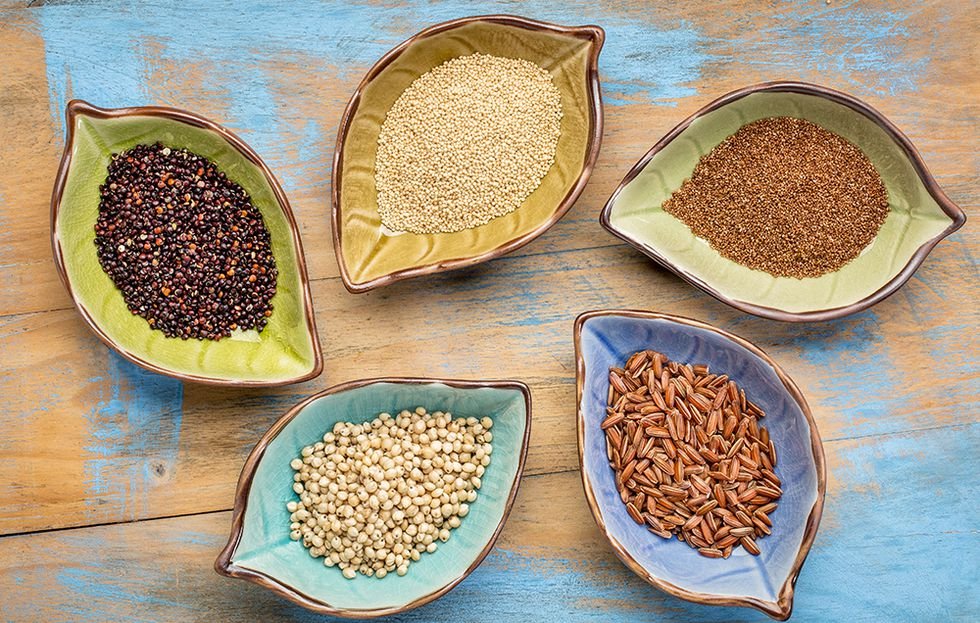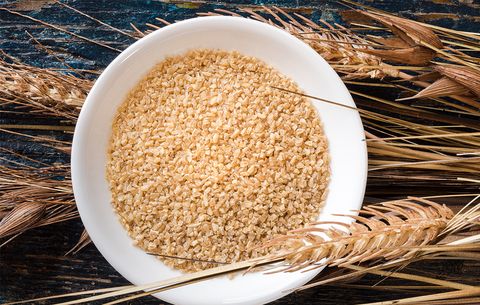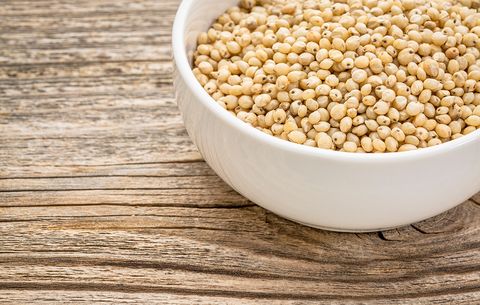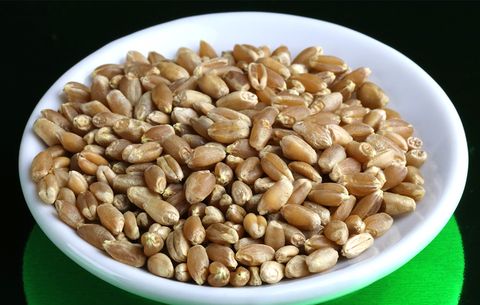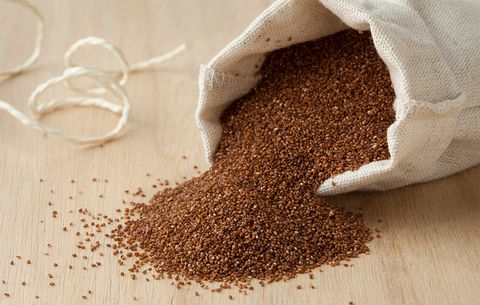
In contrast to refined grains, which contain only the endosperm (or starchy middle) of the grain, whole grains also contain the germ (where you’ll find most nutrients) and the bran (or outer hull). An excellent source of fiber and essential nutrients like omega-3 fatty acids, calcium, selenium, iron, and zinc, depending on the grain, whole grains are lacking in most of our diets, which tend to be high in animal protein and refined grains. “When we look at the healthiest populations, most of them have diets that are very high in whole grains, along with lots of plants and minimal animal products,” says vegetarian nutritionist Alex Caspero, R.D., owner of Delish Knowledge. “We tend to be obsessed with protein, but I wish that would turn to an obsession with fiber. We are learning more about gut health every day, and it usually comes back to the balance of gut flora. Fiber feeds the gut, and whole grains are a great source.”
A sub-type of whole grain, “ancient grains” haven’t been modified or cross-bred by modern agriculture. “Some theories say that the recent uptick in gluten-intolerance isn’t related to gluten, but more to the processing of the grains,” says Caspero. What’s more, many ancient grains are naturally gluten-free, making them a good choice for those who may be intolerant. Quinoa, Caspero says, was the first ancient grain to appear on the market around 2010 and has since become a staple in kitchens. “From there, I think people were looking for other alternatives to wheat, and ancient grains are not only delicious and hearty, but they may be easier to digest than traditional wheat,” she says.
However, as delicious as it is, one can only eat so much quinoa. So if you’re craving something different in your ancient grain routine, but don’t know where to begin, try Caspero’s top six recommendations. (Note: all of the nutrient information is for one cup cooked; for denser grains like farro, you can serve half a cup for a lighter portion). You’ll find your grain bowls will thank you for it!
FARRO
- Calories: 400
- Protein: 14 grams
- Carbs: 74 grams
- Fiber: 14 grams
- Iron: 3 milligrams
BULGUR
“If farro is my ‘winter grain,’ I eat a ton of bulgur wheat during the summer. It’s so light and chewy,” says Caspero. Bulgur is high in minerals like manganese (1.1 milligrams; over half your RDA), magnesium (58 milligrams), and iron. With a consistency that goes great in grain-salad dishes, make tabouli by mixing bulgur with lots of chopped parsley, tomatoes, cucumbers, lemon juice, and olive oil.
- Calories: 151
- Protein: 5.6 grams
- Carbs: 33.8 grams
- Fiber: 8.2 grams
- Iron: 1.75 milligrams
- Calories: 360
- Protein: 10 grams
- Carbs: 72 grams
- Fiber: 10 grams
- Iron: 3.6 milligrams
WHEAT BERRIES
- Calories: 280
- Protein: 9 grams
- Carbs: 62 grams
- Fiber: 10 grams
- Iron: 2.3 milligrams
TEFF
“If you’ve eaten at an Ethiopian restaurant, you’ve had teff,” says Caspero. Along with sorghum, the flour is used to make the spongy Ethiopian sourdough-flatbread, injera. Gluten-free and high in calcium (123 milligrams per cup), teff also serves up nearly a third of your daily iron requirements.
- Calories: 255
- Protein: 9.75 grams
- Carbs: 50 grams
- Fiber: 7.1 grams
- Iron: 5.2 milligrams
SPELT
- Calories: 246
- Protein: 10.7 grams
- Carbs: 51 grams
- Fiber: 7.6 grams
- Iron: 3.4 milligrams
Source: https://www.womenshealthmag.com/food/a19991837/ancient-grains-nutrition/

